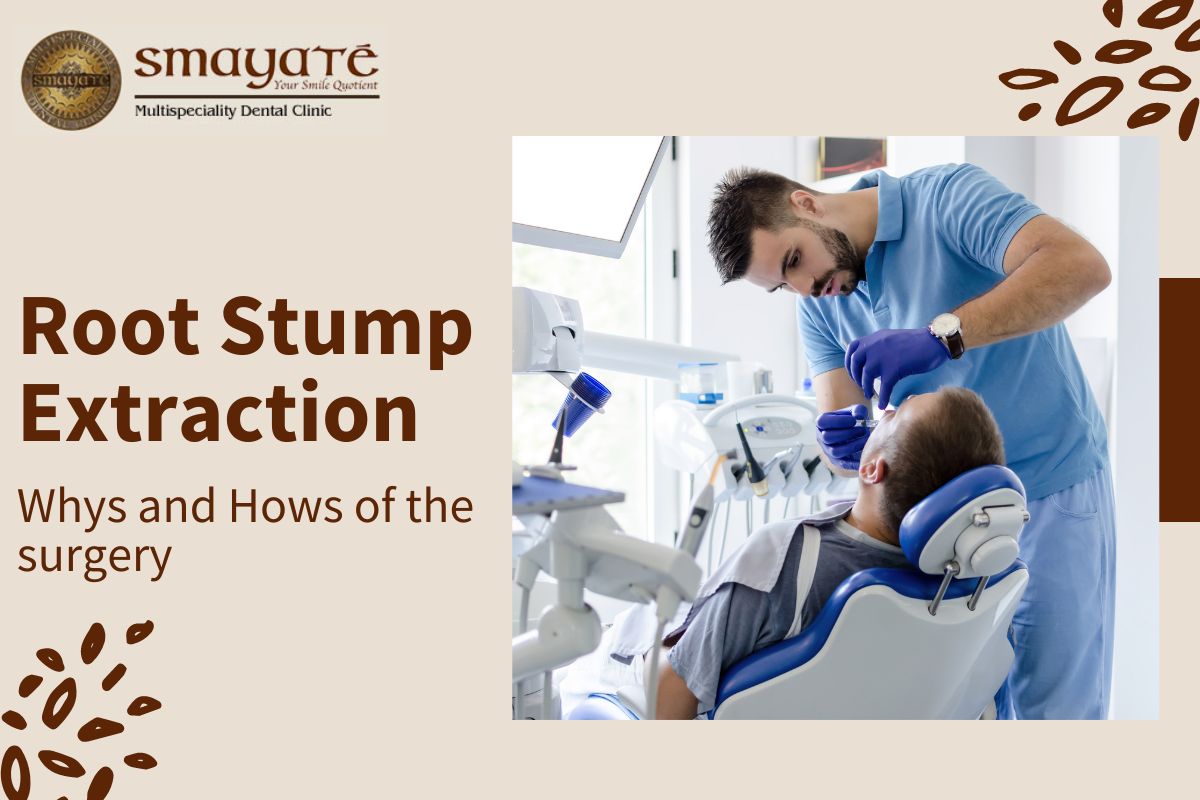What is root stump extraction?- Root Stump Extraction in Delhi
Root stump extraction is a procedure that involves the removal of the remaining root of a tooth that has been broken off or removed due to decay or trauma. Our team of dentist at Smayate Dental Clinic Delhi typically performs this procedure regularly and can help alleviate pain and prevent infection in the affected area
How is tooth root stump extraction performed?
- Root stump extraction is typically performed under local anesthesia to numb the affected area.
- Once the area is numb, the dentist or oral surgeon will make a small incision in the gum tissue to access the remaining root. The root may be gently loosened and removed using specialized dental tools or must be carefully sectioned and removed in pieces.
- After removing the root, the area will be thoroughly cleaned, and the incision will be closed using sutures.
- The whole process is performed painlessly by our team of experts at Smayate Dental Clinic Delhi
Why Root Stump Extraction in Delhi is needed?
Pain relief
A root stump can be a source of pain and discomfort, especially if it becomes infected. By removing the remaining root, patients can experience immediate relief from pain and discomfort.
Prevents infection
When a tooth breaks off or is extracted, the remaining root can allow bacteria to multiply, leading to infection. Root stump extraction removes this potential source of infection, reducing the risk of complications and promoting healing.
Promotes healing
It is an important step in the healing process after a tooth is extracted or broken. By removing the remaining root, the area can begin to heal more quickly and effectively.
Aftercare Instructions of Root Stump Extraction in Delhi
- Bite down on gauze: After the procedure, your dentist or oral surgeon will place a piece of gauze over the extraction site. Bite down on the gauze to help control bleeding and promote blood clotting.
- Apply ice: To reduce swelling and discomfort, apply an ice pack to the affected area for 10 to 20 minutes. Repeat this every few hours for the first day or two after the procedure.
- Take pain medication: Your dentist or oral surgeon may prescribe or recommend over-the-counter pain relievers to help manage discomfort. Take these medications as directed.
- Avoid smoking and alcohol: Smoking and drinking alcohol can interfere with healing and increase the risk of complications. Avoid these activities for at least 24 to 48 hours after the procedure.
- Eat soft foods: Stick to soft, cool foods for the first few days after the procedure. Avoid hot, spicy, and crunchy foods that could irritate the extraction site.
- Brush and floss gently: Maintaining good oral hygiene after the procedure is important, but be gentle around the extraction site. Avoid brushing or flossing directly over the extraction site for the first few days.
- Don’t use a straw: Using a straw can dislodge the blood clot and delay healing. Avoid using a straw for at least 24 hours after the procedure.

